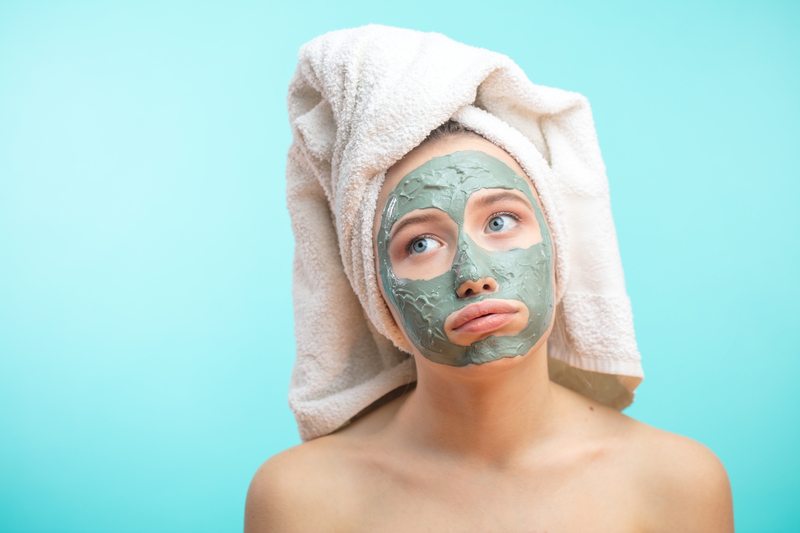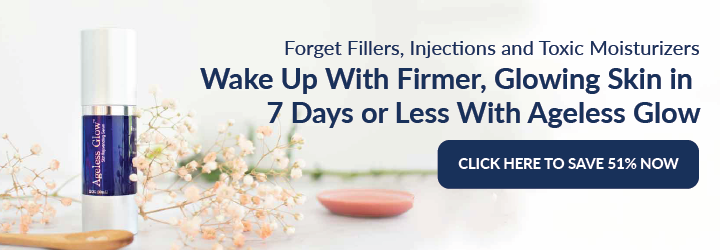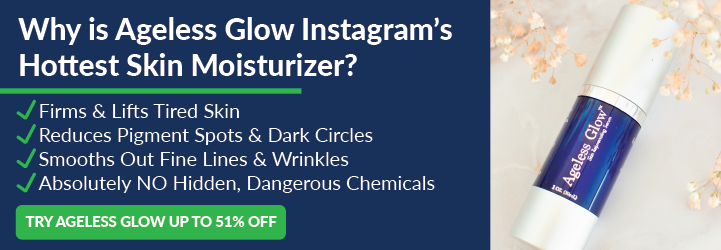12 Scary Ingredients Hiding in Popular Skincare Products

When it comes to skincare and giving your skin what it needs to look clean, fresh, and healthy, there are a lot of considerations, such as the cost of a product, how it feels on your skin, if you like the scent, how well it works, and, of course, what’s in it. You may not be aware, but while skincare products are regulated by the Food and Drug Administration, they don’t need FDA approval before they hit the market, with the exception of color additives other than coal-tar (which, just as it sounds, is derived from burning coal) hair dyes. 1
In other words, according to U.S. law, it’s up to the “companies and individuals who market cosmetics… to ensure the safety of their products.” That said, the FDA can take action against a company if there’s reliable information indicating the product is unsafe when used according to directions or if it’s not properly labeled. The FDA, however, can only “request” and monitor a product recall and not order one. 1
Instead, the FDA relies on an industry board (the Cosmetic Ingredient Review, or CIR) to publish safety studies on all ingredients used, so that any ingredients that find their way into your skincare product are considered “okay.” (Incidentally, the CIR shares offices with the cosmetic industry trade association.) The FDA doesn’t step in unless a health or medical problem comes to light.
Yet, even when products are allowed by the CIR (and FDA), that doesn’t necessarily mean they’re actually good for the skin. In fact, there are some seriously suspect and even scary-sounding ingredients that can be found in many popular skincare products.
While many manufacturers go to great lengths to ensure the safety of their products, many may not be as conscientious. Some manufacturers don’t even list all of the ingredients in their skincare products. And, there’s no legal obligation for companies to list their ingredients online.
Fragrance and flavor are also considered trade secrets, and those singular phrases can mask some 4,000 chemicals that various formulators use—the most common being phthalates. These chemicals can alter the scent and make it last longer, but phthalates are also believed to contribute to breast cancer, alter cytokines (which are key players in the immune system), and disrupt hormones. 2
In other words, it’s often buyer beware before just grabbing any ol’ product off the shelf and slathering it into your skin, hoping the marketing claims are true and that you won’t have an adverse reaction.
There are, fortunately, high-quality companies that put a lot of effort into sourcing quality ingredients for their products. And you’ll see them highlight the benefits of each ingredient and assure the customer that the recommended amounts of that ingredient are found within the product, as they believe full transparency is the best practice. These are often newer brands pursuing the customers of some of the old beauty manufacturers that continue to cling to the old ways of obscuring their ingredients.
12 Controversial Skincare Ingredients in Popular Products
Many of us are becoming aware that the products we’ve used for years may not be as benign as we once believed. Our favorite go-to lotion or anti-aging skin serum, for example, could have several ingredients that can become toxic when used regularly. And some compounds just sound scary…do you really want to be putting formaldehyde, parabens, or sulfates onto your body?
We’re certainly not trying to scare you, but it is a good idea to become a bit more skeptical as you determine what you really do want to put on your skin, as what you put on your skin can be absorbed into your bloodstream.
That is to say, as in much in life, it’s important to do your homework, seek out the source of information, and become a more informed consumer.
Let’s take a look at some of the sketchier ingredients, shall we?
1. Parabens
These cheap preservatives are used to prevent mold, fungus, and parasites and are thus found in about 60% of all cosmetic products. Unfortunately, studies have also found that they are absorbed through the skin and into the bloodstream where they can accumulate. They can then mimic estrogen and disrupt the delicate hormonal balance. While results are mixed, paraben exposure has been linked to breast cancer in some research. 3
Fortunately, there are many safer alternatives, including vitamin E, rosemary extract, and antioxidant-rich oils, like those derived from almond, avocado, and hemp seed.
Other alternatives to avoid include ethylhexylglycerin and phenoxyethanol, which have been associated with skin irritation.
2. Phthalates
These chemicals are used to help products remain in a liquid state and to prevent them from drying out. They’re found in a wide range of products, from cleansers and shampoos to creams and moisturizers to nail polish and packaging.
Unfortunately, they’ve been linked to fertility risks, miscarriage, and gestational diabetes; breathing problems (including asthma); hyper activity; and breast cancer. 4, 5, 6
Avoid using products that contain phthalates and fragrances, as well as those that come in cheap plastic packaging.
3. Synthetic Fragrances
Fragrances, scents, or perfumes are found in over half of the cosmetic products available. They may provide some of your favorite trademark scents, but they’re often chemical concoctions and a catch-all term for “secrets.” The biggest issue is that companies aren’t required to actually tell customers what is in their secret blends, so there’s really no way to tell. And many of the ingredients included in fragrances have been shown to be potentially harmful. They’re also often the culprit in allergic reactions (up to 30%) of the time.
Instead, look for products that are fragrance-free, unscented, or use high-quality essential oils.
4. Sodium Lauryl Sulfate (SLS)
One of the most common ingredients found in skincare products (up to 90%), SLS is used to create foam or lather. It doesn’t appear that the ingredient itself causes major problems, though it may irritate the skin, lungs, and eyes of some folks. The concern comes from the harmful contaminants that can be created during manufacturing, including ethylene oxide and 1-4-dioxane, which are both potential human carcinogens. 7, 8
Look for SLS-free formulas that use saponified carrier oils or castile soaps (e.g., coconut, olive oil, and sunflower oils) instead.
5. Other Sulfates
Sodium laureth sulfate (SLES) and ammonium laureth sulfate are other concerns. They’re produced from both petroleum and plant sources, like coconut and palm oil, and are added into a lot of products to help them lather or foam up. Again, they’re known skin, eye, and lung irritants. And they can strip moisture and natural oils away from the skin and hair and can clog pores and lead to acne.
And of course, when created using petroleum products, they also have an impact on pollution, greenhouse gases, and climate change.
There are other less controversial ingredients to use instead, such as sodium cocoyl glycinate, sodium cocoyl glutamate, decyl glucoside, and lauryl glucoside.
6. Propylene Glycol
This added to many skincare products—it can also be found in antifreeze, brake fluid, and paint—because can allow chemicals to be more easily absorbed through the skin and into the bloodstream. Alone, propylene glycol has been linked to skin irritation and inflammation. While it’s intended to prevent the loss of moisture by sealing moisture into the skin, it can actually make skin dryer by pulling moisture from the top layers deeper down. Instead, look for products that use vegetable glycerin.
7. Formaldehyde
This ingredient is used in several products as a preservative to help prevent the growth of bacteria. Unfortunately, it’s been found to be a carcinogen and has been linked to respiratory symptoms, skin reactions, and negative effects on the immune system. 9,10,11
8. Triclosan (aka Microban)
Another preservative found in many skincare products, it’s often advertised as an anti-bacterial in soaps and hand sanitizers. Unfortunately, triclosan can kill both the good and bad bacteria, and much of our skin health is dependent on the good bacteria that lives on it. Plus, there’s no evidence that triclosan is any better than washing with regular soap and water, and it is NOT recognized as generally safe and effective by the FDA. 12
On the other hand, there is concern that triclosan could lead to the growth of “superbugs,” which are dangerous as they’re resistant to antibiotic treatment. 13 In addition, triclosan could disrupt hormonal balance and the balance of the immune system. It can also build up within fat cells and has been found in breast milk, blood, and urine.
Instead, look for essential oils that may provide benefits, such as thyme, rosemary, lavender, or citrus.
9. Hydroquinone
This ingredient is included in skin products to lighten overall complexion and reduce dark spots by reducing the amount of melanin in the skin. Unfortunately, this is also damaging to the skin, as it may permanently change your pigment as well as reduce skin levels of elastin and collagen. Scary stuff as elastin and collagen are what keeps the skin looking firm, smooth, and youthful. This ingredient is also associated with allergic reactions and contact dermatitis with regular use.
If you are looking to brighten up the skin and reduce the appearance of age spots, there are other good alternatives, such as Bellis perennis (Daisy) flower, Niacinamide (vitamin B3), diglucosyl gallic acid (found in sumac trees), Gwennis, and other natural antioxidants.
10. Petroleum (and Petrochemical Mineral Oils)
Added to the skin to increase or lock in moisture, among other reasons, motor oil is not something you want to be rubbing in your skin. Though it’s been found in nearly 22% of beauty products, it’s been linked to a number of health concerns. In addition, it’s also often contaminated with other toxic chemicals, some of which have been shown to lead to cancer and nerve damage. 14 And that doesn’t even get into their environmental and social impact.
Alternate names to also watch for as they’re derived from petroleum or coal tar include benzene, toluol, phenylmethane, methylbenzene, petrolatum, xylene, mineral oil, or liquid paraffin.
There’s really no reason to expose your skin to these potential toxins, as a variety of safer ingredients are available, such as vegetable glycerin, coconut oil, sunflower oil, olive oil, and shea butter.
11. Synthetic Dyes/Colors
If you see something listed as FD&C or D&C, then you know your product has artificial dyes, which are typically made from petroleum or coal tar. 15 Again, these have been linked to skin irritation, allergic reactions, cancer, and hyperactivity in children. 16, 17 They’re banned by the European Union, yet still found in many U.S. products.
12. Personal Allergens
While many ingredients are natural and safe for most people, we are all individuals. And your skin may react differently. For example, if you have an allergy to an ingredient, then it won’t be safe for you. Watch labels, and if your skin reacts, stop using the product immediately. This applies to all products, including essential oils, which are concentrated ingredients. It’s also possible to develop allergies throughout your life. So, even if you used a product with no problems and are only now seeing symptoms, again, stop using the product.
New Laws Coming?
The last time laws were passed regarding cosmetics and skincare were in 1938—yes, as in before World War II. Since that time, an estimated 80,000 synthetic chemicals have been added to products, with a mere 5% being tested for safety. Many of these products are likely perfectly safe. But we just don’t know for certain. Some have been associated with cancer, skin reactions, and numerous other problems.
Since 2015, Congress has been “considering” updating the antiquated cosmetic laws and how the industry is regulated by requiring companies to:
- Register facilities
- Disclose ingredients used to the FDA
- Ensure cosmetics are made in a clean environment
- Allow the FDA to inspect factories and records
- Report serious adverse events within 15 days
- Recall dangerous products
- Include warnings and labels for products that aren’t suitable for all. 18
Even if new laws on skincare products are passed, it’s up to consumers to stay aware of what is in their products to ensure they’re safe for them. (Remember, we’re all different.)
Until the laws change (if they ever do), the best way to protect your skin, your health, and your wallet is to become informed and choose to purchase from quality, transparent brands that offer safer ingredients. With every purchase, you’ll also be steering the entire skincare industry toward the use of safer ingredients, as consumer demand influences all of their decisions.








